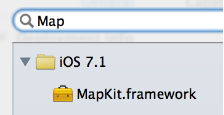使用NSProxy和NSObject設計代理類的差異
經常發現在一些需要使用消息轉發而創建代理類時, 不同的程序員都有著不同的使用方法, 有些采用繼承於NSObject, 而有一些采用繼承自NSProxy. 二者都是Foundation框架中的基類, 並且都實現了
先貼一下通過二者來創建代理類的最基本實現代碼.
繼承自NSProxy
@interface THProxyA : NSProxy
@property (nonatomic, strong) id target;
@end
@implementation THProxyA
- (id)initWithObject:(id)object {
self.target = object;
return self;
}
- (NSMethodSignature *)methodSignatureForSelector:(SEL)selector {
return [self.target methodSignatureForSelector:selector];
}
- (void)forwardInvocation:(NSInvocation *)invocation {
[invocation invokeWithTarget:self.target];
}
@end繼承自NSObject
@interface THProxyB : NSObject
@property (nonatomic, strong) id target;
@end
@implementation THProxyB
- (id)initWithObject:(id)object {
self = [super init];
if (self) {
self.target = object;
}
return self;
}
- (NSMethodSignature *)methodSignatureForSelector:(SEL)selector {
return [self.target methodSignatureForSelector:selector];
}
- (void)forwardInvocation:(NSInvocation *)invocation {
[invocation invokeWithTarget:self.target];
}
@end代碼基本是一致的, 除了初始化時規范的寫法有細節差異, 這個差異是因為NSProxy這個基類沒有定義默認的init方法.
1.經測試發現以下兩個在
NSString *string = @"test"; THProxyA *proxyA = [[THProxyA alloc] initWithObject:string]; THProxyB *proxyB = [[THProxyB alloc] initWithObject:string]; NSLog(@"%d", [proxyA respondsToSelector:@selector(length)]); NSLog(@"%d", [proxyB respondsToSelector:@selector(length)]); NSLog(@"%d", [proxyA isKindOfClass:[NSString class]]); NSLog(@"%d", [proxyB isKindOfClass:[NSString class]]);
結果會輸出完成不同的結論:
1 0 1 0
也就是說通過繼承自NSObject的代理類是不會自動轉發respondsToSelector:和isKindOfClass:這兩個方法的, 而繼承自NSProxy的代理類卻是可以的. 測試
2.NSObject的所有Category中定義的方法無法在THProxyB中完成轉發
舉一個很常見的例子, valueForKey:是定義在NSKeyValueCoding這個NSObject的Category中的方法, 嘗試二者執行的表現.
NSLog(@"%@",[proxyA valueForKey:@"length"]); NSLog(@"%@",[proxyB valueForKey:@"length"]);
這段代碼第一句能正確運行, 但第二行卻會拋出異常, 分析最終原因其實很簡單, 因為valueForKey:是NSObject的Category中定義的方法, 讓NSObject具備了這樣的接口, 而消息轉發是只有當接收者無法處理時才會通過forwardInvocation:來尋求能夠處理的對象.
3.結論: 如此看來NSProxy確實更適合實現做為消息轉發的代理類, 因為作為一個抽象類, NSProxy自身能夠處理的方法極小(僅
- 上一頁:漫談iOS Crash收集框架
- 下一頁:SDWebImage源碼刨根問底
- 值得珍藏的iOS開辟經常使用代碼塊
- iOS10 App適配權限 Push Notifications 字體Frame 碰到的成績
- iOS開辟之(APNS)長途推送完成代碼 附證書與真機調試
- iOS 開辟經常使用宏總結
- iOS經常使用加密算法引見和代碼理論
- 比擬IOS開辟中經常使用視圖的四種切換方法
- iOS中NSArray數組經常使用處置方法
- iOS中應用NSURLConnection處置HTTP同步與異步要求
- 實例講授iOS中的CATransition轉場動畫應用
- iOS中的表單按鈕選項UIActionSheet經常使用辦法整頓
- iOS運用開辟中AFNetworking庫的經常使用HTTP操作辦法小結
- iOS多線程開辟——NSThread淺析
- iOS運用開辟中應用NSLocale類完成對象信息的當地化
- iOS中的NSTimer准時器的初步應用解析
- iOS運用中UILabel文字顯示後果的經常使用設置總結




